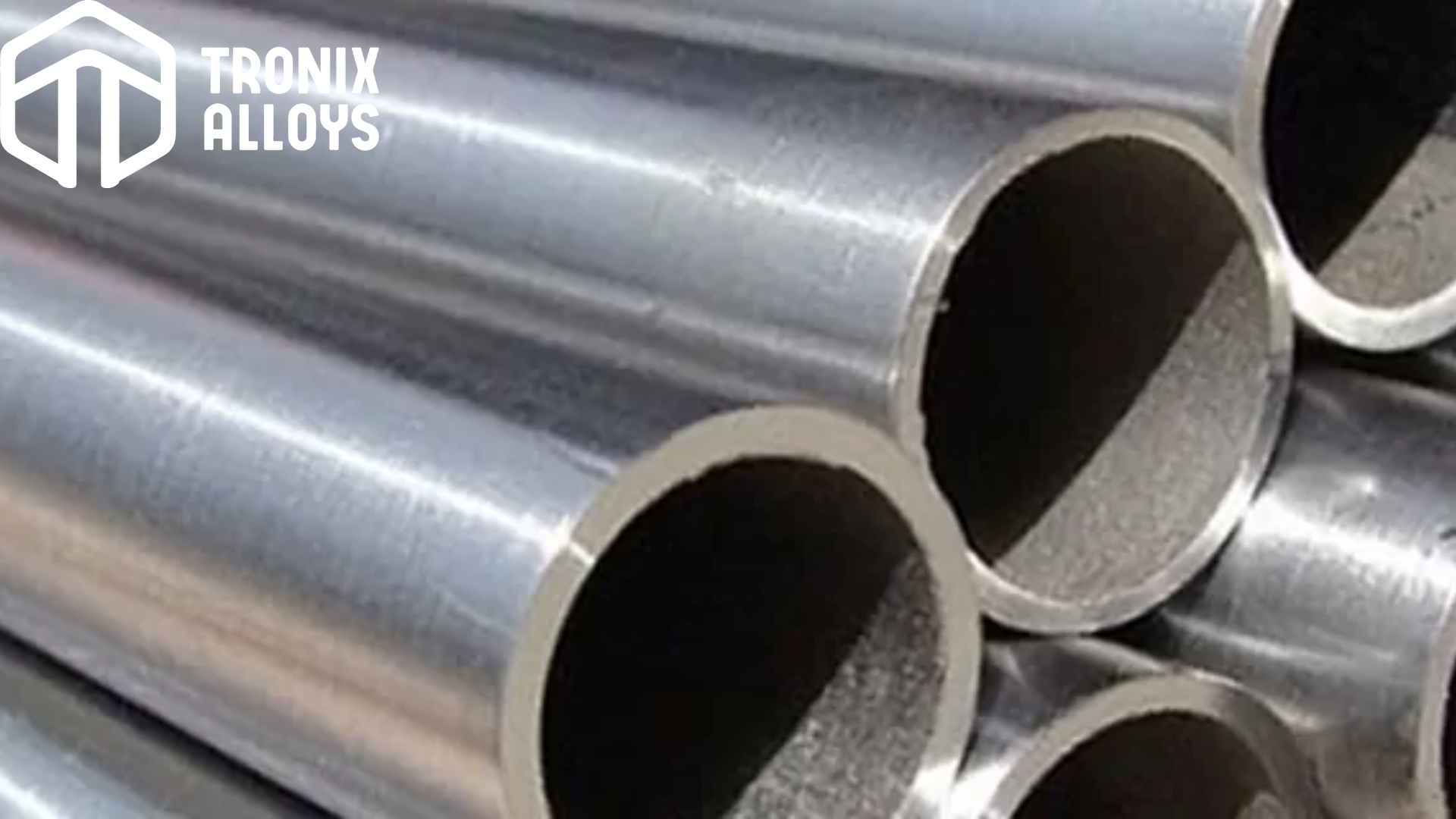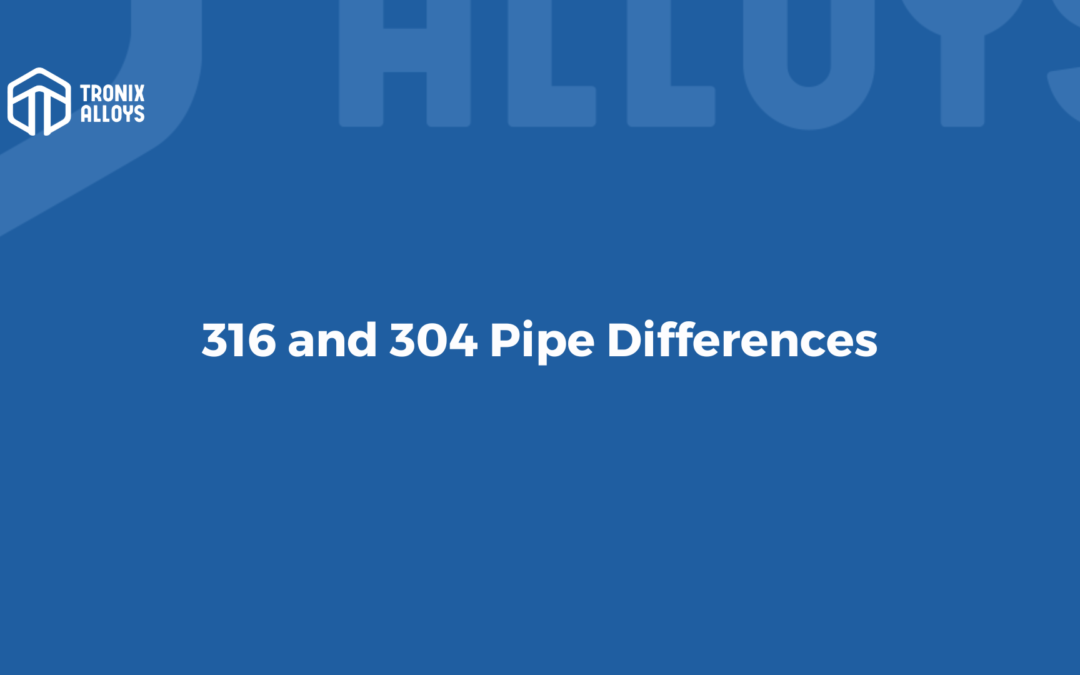Stainless steel is one of the most commonly used materials in metal applications because of its strength, corrosion resistance, and cost efficiency. The types of stainless steel that are available are ferritic, austenitic, and duplex. It is important to note that stainless steels 304 and 316 are austenitic steels. Neither of them has a nickel content that exceeds 8%, but both of them have an 18% chromium content. It is worth mentioning that the 316 material contains molybdenum in its composition. In addition to containing 4% molybdenum, 316 material is also corrosion-resistant against chloride ions since it contains 4% molybdenum. Carbon, iron, manganese, phosphorus, sulfur, and silicon are some of the elements that make up both materials. As far as density is concerned, both of them have a density of 8 grams per cubic centimeter. Compared to the 316 material, the 304 material is much easier to machine than the 316 material.
What is the difference between 304 and 316 stainless steel?
There are a number of alloys containing chromium that are stainless steel. A stainless steel alloy contains chromium as an addition, which gives it the ability to withstand corrosion6 and falls under the authentic class. Since they belong to the austenitic class of stainless steel, their basic chemical makeup remains nearly similar, concerning the elements used. It is, however, the specificity of their chemistry that distinguishes the two grades from each other and makes them differentiated from one another. Nickel and chromium are the main components of both alloys. These elements are present in varying percentages, however, depending on the region. In stainless steel grade 304, for instance, the chromium content is 18% and the nickel content is 8%. Because of this, the alloy is also sometimes referred to as 18/8 stainless steel because the composition of the alloy is 18% chromium and 8% nickel. In contrast, alloy 316, which is also known as marine grade, contains about 16% of chromium in its alloy, which can also make the alloy suitable for the marine environment. The only difference between the chemical composition of the alloy and the stainless steel grade 316 alloy is the addition of molybdenum to the alloy in order to make it different from the stainless steel grade 304 alloy. Despite the fact that grade 304 contains trace quantities of molybdenum, alloy 316 contains a greater percentage of this element (2% to 3%) since it has a higher percentage of this element. An austenitic stainless steel alloy with a high concentration of molybdenum is known to be able to improve the corrosion resistance properties with higher levels of molybdenum. Consequently, molybdenum-bearing austenitic alloys, such as grade 316, tend to have significant levels of corrosion resistance properties due to the fact that they contain a significant amount of molybdenum. Depending on the specific chemistry used in the alloys, every metal acquires varying degrees of mechanical properties based on the specific properties of its chemistry. The tensile and yield strength of grade 304, for instance, is much lower than that of alloy 316, for example. As a result of grade 316’s high creep strength, the alloy can be used at temperatures higher than grade 304, which means that it is suitable for use in high temperatures. While the properties of stainless steel alloy 316 are significantly higher than those of stainless steel alloy 304, the addition of molybdenum to the alloy also increases the price of the alloy. Due to the absence of molybdenum in the alloy of grade 304, if you compared the price of both metals, grade 304 would be cheaper as compared to grade 316.

304 vs 316 stainless steel machinability
As a general rule, austenitic stainless steels are known for having difficult machining properties. In particular, stainless steels that belong to the 300 series have a tendency to harden when they are worked. Therefore, specialized tools are necessary in order to be able to machine these alloys. The stainless steel 316 grade has a higher tendency to work harden than grade 304, which is the reason why it requires special machining tools with cutting rates that are different from those used with grade 304. It is difficult to machine these austenitic alloys due to the chemical composition of the alloys.
304 vs 316 stainless steel magnetic properties
In both alloys 316 and 304, the crystalline structure is austenite. Known as austenite, gamma-phase iron creates this face-centered cubic microstructure. Alloys made of iron are typically nonmagnetic since they are solid solutions of iron. These austenitic alloys, however, tend to become magnetic if cold worked. Because these alloys are magnetic, they will have a decreased corrosion resistance due to their magnetic properties.
How to check ss 304 and 316?
By visual examination, it is virtually impossible to tell the difference between alloys 316 and 304 just by looking at them, as it is with most stainless steel alloys. There are two different types of alloys that can be distinguished by the use of a material test report (MTR), or, as it is sometimes called, a mill test report, which is basically what the material test report is. The purpose of this test report is essential to confirm the chemical composition of the alloy. This material test report not only confirms the elements in any given alloy, but it is also certification of its physical properties. The material test report is not limited to confirming the elemental composition of any alloy.
How do you know you’re getting 316 stainless steel instead of 304 stainless steel?
It’s impossible to tell just by looking at it. A polished or grained sheet of metal has no discernible difference between two identical pieces. For this reason, it’s necessary to have a material test report (MTR) of the actual material to prove it’s 304 or 316. As a result, we request one with every shipment we receive so we can assure our customers that the enclosure and its parts are made from the exact stainless steel material they ordered. A number 6 within a circle, as shown in the photo above, is specifically marked on some small parts made from 316 stainless steel, such as clamps and mounting feet.
What is Type 304 stainless steel and what’s it used for?
As the most versatile and widely used austenitic stainless steel, type 304 has a high chromium-nickel content and low carbon content. Each of its alloys is a modification of the austenitic alloy containing 18% chromium and 8% nickel. There are many advantages to using type 304, including its resistance to corrosion, oxidation, and durability. A variety of finishes and appearances are available, and all are easy to fabricate and clean. They also prevent product contamination and offer a variety of finishes and appearances. Electrical enclosures, auto molding and trim, wheel covers, kitchen equipment, hose clamps, exhaust manifolds, stainless hardware, storage tanks, pressure vessels, and piping are made of stainless steel type 304.
What is Type 316 stainless steel and what’s it used for?
When exposed to many types of chemical corrodes such as seawater, brine solutions, and the like, Type 316 stainless steel offers superior corrosion resistance in comparison to other types of chromium-nickel steels. It is austenitic chromium-nickel steel that resists heat and corrosion. There is greater resistance to the chemical attack in stainless steel type 316 alloy due to the addition of molybdenum to the steel alloy. In addition to its durability, type 316 is easy to fabricate, easy to clean, easy to weld, and easy to finish. This material is considerably more resistant to a wide range of chemicals such as sulfuric acid, chlorides, bromides, iodides, fatty acids and brines at high temperatures. It is necessary to use stainless steels that contain molybdenum in the manufacture of certain pharmaceuticals in order to prevent excessive amounts of metallic contamination from occurring. In the end, Type 316 stainless steel costs a little bit more upfront, but you’ll be able to save a whole lot in the long run – especially if you’re going to be using the enclosure outdoors.


Grade 304 stainless steel is the most commonly ordered stainless steel around the world. Stainless steel is known for its corrosion resistance, formability, strength, and ease of maintenance. In terms of volume, 316 comes in second, but its corrosion resistance to chlorides and acids is vastly superior.
Austenite is the crystalline structure of both alloys 316 and 304. Gamma-phase iron creates this face-centered cubic microstructure known as austenite.
Depending on the specific chemistry used in the alloys, every metal acquires varying degrees of mechanical properties based on the specific properties of its chemistry.
These elements are present in varying percentages, however, depending on the region.
Due to its strength, corrosion resistance, and cost efficiency, stainless steel is one of the most commonly used metals.